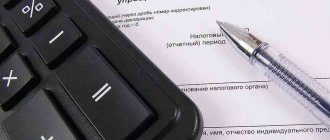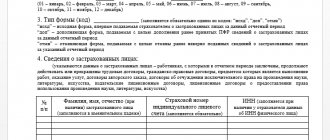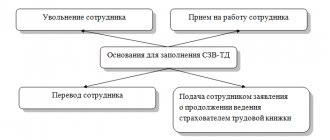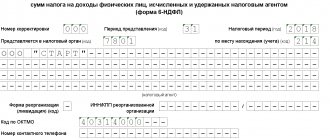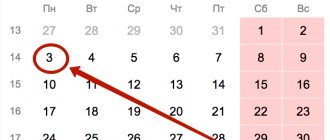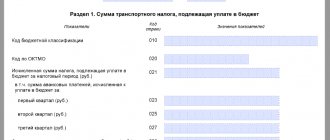The concept of materials and raw materials in accounting
These nomenclature groups include assets that can be used as semi-finished products, raw materials, components and other types of inventory assets for the production of products and services, or used for the own needs of an organization or enterprise.
Purposes of materials accounting
- Control of their safety
- Reflection in accounting of all business transactions involving the movement of inventory items (for cost planning and management and financial accounting)
- Formation of cost (materials, services, products).
- Control of standard stocks (to ensure a continuous cycle of work)
- Identification of shortages, losses, damage to materials
- Analysis of the effectiveness of the use of mineral reserves.
Subaccounts 10 accounts
PBUs establish a list of certain accounting accounts in the Chart of Accounts that should be used to account for materials in accordance with their classification and item groups.
Depending on the specifics of the activity (budgetary organization, manufacturing enterprise, trade, etc.) and accounting policies, accounts may be different.
The main account is account 10, to which the following sub-accounts can be opened:
| Subaccounts to the 10th account | Name of material assets | A comment |
| 10.01 | Raw materials | |
| 10.02 | Semi-finished products, components, parts and structures (purchased) | For the production of products, services and own needs |
| 10.03 | Fuel, fuel and lubricants | |
| 10.04 | Container materials, packaging | |
| 10.05 | Spare parts | |
| 10.06 | Other materials (for example: stationery) | For production purposes |
| 10.07, 10.08, 10.09, 10.10 | Materials for processing (outside), Construction materials, Household supplies, equipment, Working clothes, equipment (in warehouse) |
The chart of accounts classifies materials according to product groups and the method of inclusion in a certain cost group (construction, production of own products, maintenance of auxiliary production and others, the table shows the most used ones).
What is the difference between product assembling and production?
The assembling of items relates specifically to warehouse operations, and not to production ones. To understand what the difference is here, let's look at two cases.
Case one. We purchase pencils, pens, erasers and ZIP-Lock bags separately from the supplier. Then we put one pencil, a pen and an eraser in each bag, and then we sell it under the name “Writing Set”. This is a typical configuration example. The peculiarity is that, if desired, such a kit can be easily disassembled into parts.
Case two. We take water and ethyl alcohol and mix them to get vodka. It seems to be the same as in the previous case, but in fact this is not the case, since the reverse process, that is, obtaining alcohol and water from vodka separately, can only be done using special equipment. Indeed, try dividing vodka into pure alcohol and water! It just won't work out that way! Therefore, this case no longer relates to packaging, but to production.
From the two examples given, the difference between product assembling and production is clearly visible. Such operations should not be confused.
Correspondence on account 10
The debit of 10 accounts in the postings corresponds with production and auxiliary accounts (on credit):
- 20.01 (main production)
- 23 (auxiliary)
- 25 (general production)
- 26 (general economic, management)
Besides them:
- 44 (sales expenses)
- 45 (shipped goods)
- 76 (settlements with debtors and creditors)
- 94 (shortages and losses)
- 99 (profit and loss)
- And others - according to the chart of accounts and accounting policies.
Step-by-step instruction
On May 28, for the purpose of selling the goods, a set of kitchen furniture, Dining group “Angelica”, was assembled as a set, consisting of:
- Table “EDT 45” – 1 pc.;
- Chair “Sonata” – 4 pcs.
Let's look at step-by-step instructions for creating an example. PDF
| date | Debit | Credit | Accounting amount | Amount NU | the name of the operation | Documents (reports) in 1C | |
| Dt | CT | ||||||
| Product packaging | |||||||
| May 28 | 41.01 | 41.01 | 33 000 | 33 000 | 33 000 | Product packaging | Nomenclature complete set |
Accounting for inventory items in accounting: postings and documents
Accounting for inventory items in accounting is reflected on the basis of primary documentation and can be as follows:
- The purchase of materials is made in cash or by bank transfer, confirmed by a purchase agreement, payment and settlement documents or the transfer of a power of attorney to receive goods and materials with subsequent settlement with the supplier. It is received at the warehouse on the basis of a bill of lading or a receipt order. When purchasing materials, additional transportation and procurement costs (for example, delivery) may be reflected.
- Sale of materials - transfer of raw materials to third parties.
- Transfer - from the founders, contractors or sponsors, is accounted for at the estimated value or on the basis of available documents: contracts, payment documents, appraisal reports, etc.
- Write-off of materials - reflects the expenditure of inventory and materials into production. It may imply both the write-off of materials for actual production and the write-off for general business needs. Depends on corr. accounts (20, 23, 25, 26). Disposal may be reflected due to damage or loss of inventory items.
- Shortage of materials or surplus of materials are recorded as a result of inventory. They may be reflected within the normal limits or as a result of loss/damage.
- Operations with customer-supplied raw materials - features of accounting for materials received from another organization.
For production and for own needs, materials are released from the warehouse upon request - invoice or other documents (based on accounting policies); are written off to the production site, which then includes them in the cost of products or services.
Carrying out inventories
Every year, according to PBU, owners are required to conduct scheduled inventories on the basis of an issued order with designated responsible persons. In addition to them, there may be unscheduled (sudden) audits and inventories. Their goal: control over the safety and correct use and write-off of inventory items .
Postings to inventory items
Materials are accounted for in account 10, which has subaccounts depending on their type (materials, semi-finished products, fuels and lubricants, inventory, others, etc.). In its accounting policy, the organization must establish how it will reflect accounting: simply at actual cost or at accounting prices (in this case, it is necessary to use accounts 15 and).
In order to write off materials, they also choose their own method in the accounting policy. There are three of them:
- at average cost;
- at cost of inventories;
- FIFO.
Materials are released into production or for general business needs. Situations are also possible when surpluses are sold, and defects, losses or shortages are written off.
Assembling and disassembling items
The assembling of the nomenclature also has a downside - disassembly. For example, we purchase mayonnaise from a supplier in boxes of 100 pieces. in a box, and must be sold at retail one piece at a time. To get things out of boxes, disassembly is used.
Here's another example. Cucumbers were brought to the restaurant in jars. However, as is obvious to everyone, these cucumbers will be added to the salad not in whole jars, but in grams. So you need to get grams from the jars.
Thus, the picking operation allows you to “assemble” one item from one or more types of another item. The dismantling operation, on the contrary, allows you to “disassemble” the item into parts.
Example of postings on account 10
The Alpha organization bought 270 sheets of iron from Omega. The cost of materials was 255,690 rubles. (VAT 18% - 39,004 rubles). Subsequently, 125 sheets were released into production at average cost, another 3 were damaged and written off as scrap (write-off at actual cost within the limits of natural loss norms).
Cost formula:
Average cost = ((Cost of remaining materials at the beginning of the month + Cost of materials received for the month) / (Number of materials at the beginning of the month + Number of materials received)) x number of units released into production
Average cost in our example = (216686/270) x 125 = 100318
Let's reflect this cost in our example:
| Account Dt | Kt account | Wiring Description | Transaction amount | A document base |
| 60.01 | 51 | Paid for materials | 255 690 | Bank statement |
| 10.01 | 60.01 | Receipt of materials to the warehouse from the supplier | 216 686 | Request-invoice |
| 19.03 | 60.01 | VAT included | 39 004 | Packing list |
| 68.02 | 19.03 | VAT is accepted for deduction | 39 004 | Invoice |
| 20.01 | 10.01 | Posting: materials released from warehouse to production | 100 318 | Request-invoice |
| 94 | 10.01 | Writing off the cost of damaged sheets | 2408 | Write-off act |
| 20.01 | 94 | The cost of damaged sheets is written off as production costs | 2408 | Accounting information |
Materials released from warehouse posting
In addition, inventory items can be sent to production.
When moving inventory items within an organization between departments, a demand invoice form M-11 is issued; when moving valuables outside the main territory of the enterprise to its own departments or third-party organizations, an invoice for the release of materials to the outside, form M-15, is used.
Release from warehouse
Depending on the direction in which inventory items are moving and for what needs they are used, invoices. 10 corresponds with the relevant accounts. The release of materials from the warehouse is reflected on the account credit.
Materials for packaging finished products were released from the warehouse.
When materials are released into production, a limit intake card is drawn up (Form No. M-8). The card is used if the organization has established a restriction (limit) on the release of materials from the warehouse.
If the organization has not established a restriction (limit) on the release of materials from the warehouse, then a demand invoice is drawn up (Form No. M-11).
For the cost of materials actually released into production, make an entry to the credit of account 10:
Debit 20 (23, 29) Credit 10
– materials are written off for the needs of the main (auxiliary, servicing) production.
Materials are written off for production using one of three methods:
- FIFO;
- at average cost;
- at the cost of each unit.
The procedure for writing off materials should be established by your accounting policy.
For each type of material, one assessment method is used for one year.
The FIFO method assumes that materials that arrived earlier than others are transferred to production first.
When writing off valuables using the average cost method, the accountant needs to determine the average cost per unit of materials.
To determine the cost of materials, which is subject to write-off, the average unit cost is multiplied by the total amount of written-off materials.
Example
The repair shop bought M-150 brand brick to carry out repair work.
Materials and wiring were released from the warehouse to production
When releasing materials from the warehouse, you can see which batch they belong to and at what price they were taken into account; it is at this cost that they are written off. That is, the cost of each unit of incoming valuables is tracked.
To reinforce this, let's look at an example.
Example:
During the month, 2 batches of materials arrived at the warehouse:
- 1 – 500 pieces at a price of 100 rubles/piece. total cost 50,000 rubles.
- 2 – 500 pieces at a price of 130 rubles/piece. total cost 65,000 rubles.
800 units of materials were released from the warehouse: 400 from the first batch and 400 from the second.
Total cost of materials supplied = 400x100 + 400x130 = 92,000 rubles.
The total cost of materials remaining in the warehouse = 100x100 + 100x130 = 23,000 rubles.
At average cost
With this method, the average cost of materials is calculated by dividing the total cost of materials stored in the warehouse by their total quantity.
This assessment method is used for those materials that are similar to each other in their characteristics.
Example:
Let's take the same conditions.
Cost of a unit of materials = (50000 + 65000) / (500 + 500) = 115 rub./piece.
Total cost of materials released from the warehouse = 800 * 115 = 92,000 rubles.
Cost of the balance in the warehouse = 200 * 115 = 23,000 rubles.
FIFO method
With this method, materials are written off one by one as they are received.
Accounting entry materials released from warehouse to production
They are indicated in parentheses after the characteristics of the business transaction.
Postings - materials were released for production and for other purposes
- Dbt 20 Kdt 10 – material consumption in the main. production (M-8, M-11, M-15).
- DBT 23 KDT 10 – to auxiliary production facilities (M-8, M-11, M-15).
- DBT 25 KDT 10 – for general purposes (M-8, M-11, M-15).
- DBT 26 KDT 10 – for general business purposes (M-8, M-11, M-15).
- DBT 10 KDT 10 – internal movement of goods and materials (invoice for internal movement).
Other disposals of inventories
In addition to the usual consumption of materials, there are other disposals of inventory and materials. Other disposals include write-offs of inventories and their donation.
Write-off occurs in three cases: inventory items become unusable, aging (moral), detection of shortage or theft of inventory items and their damage (due to force majeure circumstances, too).
Obsolescence refers to a decrease in the liquidity of oil and gas production due to the appearance of new and improved analogues on the market.
The write-off of materials is carried out by decision of a commission specially created for this purpose, in which persons financially responsible for goods and materials must be present.
The inventory is inspected and a disposal certificate is prepared. The donation of materials must occur through primary documents for the consumption of goods and materials - invoices, applications for external expenses and others.
At the same time, the fact of donation is subject to tax, as well as the usual sale of inventories for money.
BSR, ASM).
- Dbt 99 Kdt 10 – write-off during natural disasters (ASM).
- Dbt 99 Kdt 68.2 - restoration of VAT, if it has already been claimed for deduction, upon loss of goods due to natural disasters (BSR, SF).
- Dbt 91.2 Kdt 10 – disposal as a gift (M-15, Northern Fleet).
- Dbt 91.2 Kdt 68.2 – VAT on disposal as a gift (M-15, SF, sales book).
Sale of MPZ
The sale of mats is carried out at the amount agreed upon between the seller and the buyer. The calculation and payment of taxes on the sale of materials is regulated by law. When selling inventories, an invoice must be issued for the consumption of material on the side, an agreement and an invoice must be drawn up.
If materials are transported through a third-party organization, a consignment note must be issued.
Documents for transactions related to the sale of inventories: invoice M-15, invoice, bank statement (hereinafter referred to as BV), payment order (hereinafter referred to as PP), accounting statement, sales book, purchase book.
Postings when selling inventories
- DBT 91.2 KDT 10 – disposal upon sale after unloading or upon prepayment.
Next, the materials that were the first to be transferred, for example, to production, are valued at the cost of the first goods and materials received at the warehouse, taking into account their balance in the warehouse: first, the quantity is written off at the cost of the balance, then the remaining unwritten quantity is written off at the cost of the first batch, then, if necessary, the second and etc. The remaining materials are assessed at the cost of the last received batch. FIFO is used when there are relatively stable prices for inventory items.
- Based on unit cost of inventory items. The method is used to account for particularly valuable items or hazardous substances and consists of recording each receipt of such materials. Upon release, the same price applies as upon arrival at the warehouse. The method is also used for small volumes of warehouse operations.
On a note! The LIFO method is the opposite in meaning to the method, i.e. according to the cost of the last received batch, then the penultimate one, etc. FIFO has lost its importance today, since its use is justified in conditions of high inflation.
Documentation
An organization can use standardized forms of documentation to record the disposal of materials from a warehouse, or it can use independently developed forms. Their presence is reflected in the accounting policies.
Unified forms of primary documents for the release of goods and materials for production needs are:
- limit-fence card (according to f. M-8);
- demand-invoice (according to Form M-11);
- invoice (f.
Agreements for the provision of services, Certificate of acceptance and delivery of work performed, Accounting certificate-calculation 20 10-3 Fuel was consumed for the needs of the main production.
Accounting statement-calculation 25 10 Materials were released for general production needs.
No. M-8 “Limit-fence card”, No. M-11 “Requirement - invoice” 25 97 The share of deferred expenses relating to the reporting period was written off.
Accounting certificate-calculation 20 25 The costs of auxiliary production are included in general production costs. Accounting certificate-calculation 25 43 Finished products were released for general production needs.
Accounting certificate-calculation 25 60, 76 Works performed (services provided) by third-party organizations for general production needs.
Agreements for the provision of services, Certificate of acceptance and delivery of work performed, Accounting certificate-calculation 25 10-3 Fuel was consumed for general production needs.
No. M-8 “Limit-fence card”, No. M-11 “Demand - invoice” 25 69 A unified social tax was assessed on payments to employees engaged in servicing production.
Dt 91/2 Kt 68 – VAT, previously presented for deduction on goods and materials, was restored for shortages in excess of the norms of natural loss.
- Dt 91/2 Kt 94 - if inventory items are lost in excess of the norms of natural loss, but there is no possibility of recovering the cost from the culprits (the culprit has not been identified or has been acquitted in court).
The gratuitous transfer of goods and materials is attributed to Dt 91/2 , and loss due to force majeure, natural disasters - to Dt 99, with Kt 10. In this case, it is necessary to restore VAT with a posting similar to the one above.
Implementation:
- Dt 91/2 Kt 10 – disposal from the warehouse.
- Dt 62 Kt 90/1 (with VAT), Dt 91/2 Kt 68 – the sale of inventory items and VAT on them is recorded.
- Dt 50.51 Kt 62 - the buyer paid for the materials.
If there is an advance payment, then:
- Dt 50, 51 Kt 62/2 – the prepayment amount is reflected.
- Dt 76 Kt 68 – VAT is charged on prepayment.
- Dt 91/2 Kt 10 – disposal from the warehouse.
- Dt 62/1 Kt 91/1, (with VAT), Dt 91/2 Kt 68 – the sale of inventory items and VAT on them is recorded.
- Dt 62/1 Kt 62/2 – offset of prepayment for inventory items.
- Dt 68 Kt 76 – crediting VAT on the repaid prepayment amount.


